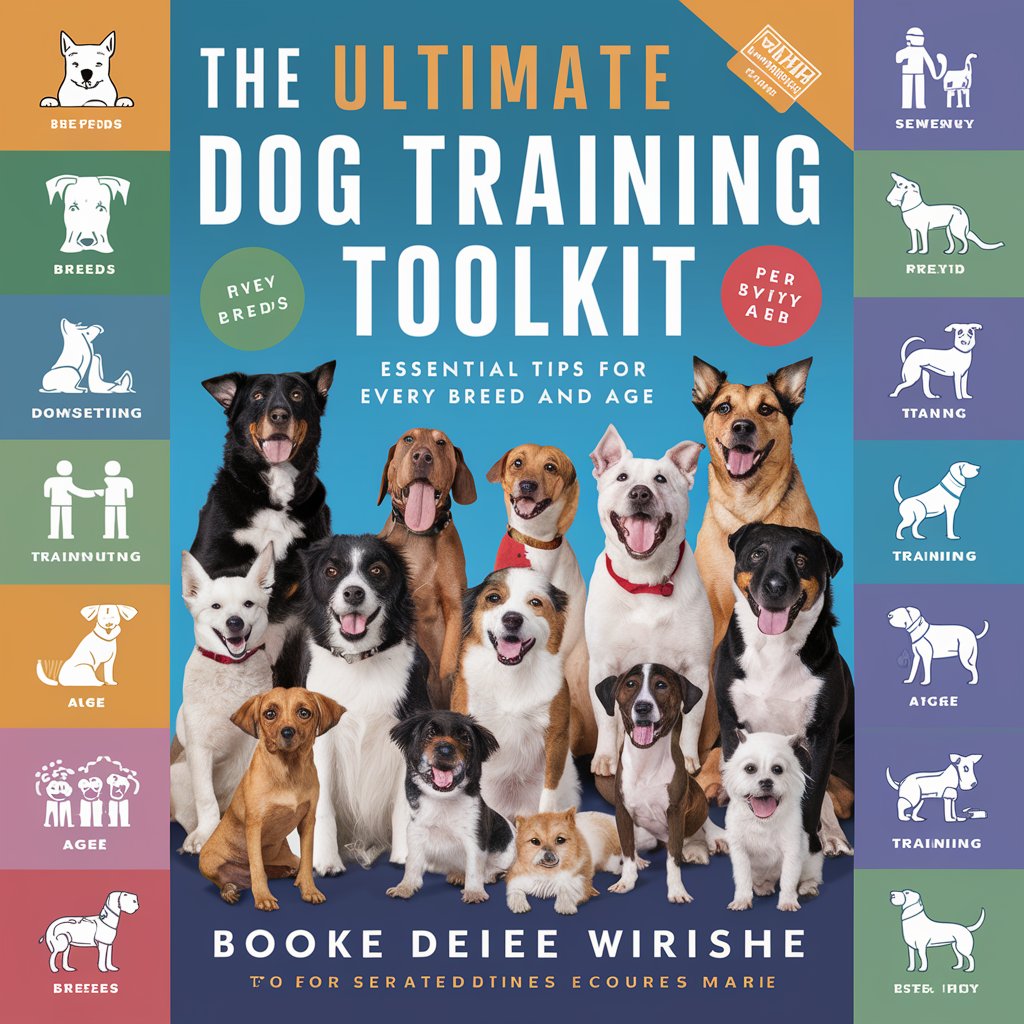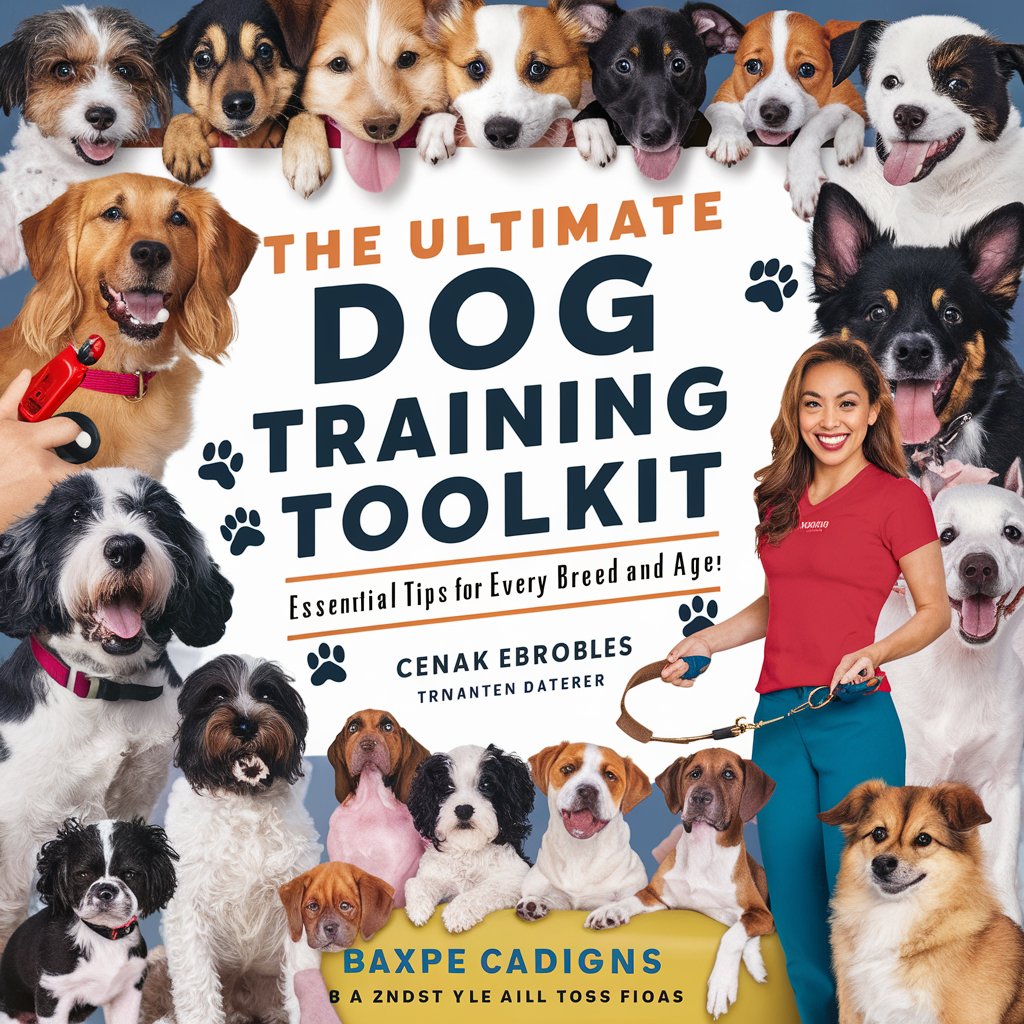Responsible pet ownership depends on you training your dog. It strengthens your relationship with your animal friend and allows you to create a harmonic home. Whether your dog is a seasoned senior, an energetic adult, or a lively puppy, the correct training tools and methods will make all the difference. Ensuring that all material is new, creative, and customized to your needs, this complete handbook offers you the best toolkit to train dogs of every breed and age.

Chapter 1: Recognizing Dog Behavior
Understanding the foundations of canine behavior is absolutely essential before delving into certain training approaches. Dogs interact via means of body language, vocalizations, and behavioral patterns. Understanding these signs will enable you to train more deliberately.
Body language refers to
Though the speed and tail position are equally crucial, a wagging tail might show happiness. While a gradual wag with the tail kept low can indicate uneasiness, a high, quick wag frequently indicates eagerness.
Erect ears and wide eyes indicate attentiveness; relaxed ears and soft eyes often indicate the dog is calm.
Confident dogs stand erect; a subservient dog would turn over or crouch to reveal its belly.
Vocalizing:
Dogs bark for alerting, attention-seeking, or showing excitement or fright among other purposes.
Often a symptom of fear, discomfort, or a need for something, whining is.
Growling suggests discomfort or a threat. It’s better to deal with the fundamental cause than punish the growl.
Behaviors Patterns:
Normal for pups, chewing in adults can point to boredom or anxiousness.
Although some breeds have a natural inclination to dig, this can also indicate nervousness or boredom.
Often a welcome gesture, jumping up can become problematic if uncontrolled.
Every dog, regardless of breed or age, should learn fundamental obedience instructions in
Chapter 2: The Foundations of Dog Training.
These fundamental abilities will help you to improve the behavior of your dog and simplify advanced training.
Pos:
Approach your dog with a reward near by, then raise your hand to let their head follow it and drop their bottom. Say “sit” and present them the treat once they are seated.
Practice often; use the command before meals, plays, or while greeting someone.
Rest:
Approach: Get your dog to sit. Say “stay,” opening your palm in front of you. Back off a little, then come back to reward them if they stay put. Increase the distance and time incrementally.
Advice: One must be patient most of all Start with little distances and gradually increase.
Come meet:
Method: Get your dog leashed. Get down to their level and gently tug the rope toward you saying “come.” When they arrive to you, treat them and provide compliments.
To reinforce the instruction, practice in a safe, enclosed space then progressively add distractions.
Get down.
Method: Start your dog in a seated position. Say “lie down” and hold a reward in your hand then slide it to the ground in front of them. Their body should drop as they follow the treat. Reward them once they’re down.
Tip: Practice in several environments and keep consistent with the command.
Leave it for me.
Approach: Hold a goodie with both hands. Show your dog one enclosed fist including the reward inside and say “leave it.” Turn aside their efforts at obtaining the treat. Once they cease, treat them from your other hand.
Use more attractive objects and practice in many surroundings to progressively raise the temptation level.
Chapter 3: Modern Training Methodologies
Your dog should be introduced more complex training methods once it has perfected the fundamentals. These abilities help especially for particular activities or behaviors.
Ankle:
Approach: Holding a reward at your waist, have your dog on a leash. Say “heel” and start moving. Reward your dog for keeping your sidekick by side.
Tip: Start in little bursts then progressively widen the gap. Reiter the behavior using incentives and verbal compliments.
Recall among distractions:
Practice the “come” command in progressively distracting surroundings. Start indoors, then go toward a fenced yard, and then test it in public spaces.
Tip: Make great use of praise and high-value rewards. Wait patiently and consistently.
Training on agility:
Create an obstacle course out of tunnels, jumps, and weave poles. Using rewards and praise, lead your dog through the course.
Keep meetings brief and enjoyable. One excellent approach to offer both physical and psychological challenge is agility training.
Trick Training:
Method: Using positive reinforcement strategies, teach lighthearted skills like “shake,” “roll over,” or “play dead.”
Advice: Give consistent cues and clear instructions. Honor little achievements and maintain the funfulness of training sessions.
Fourth chapter: Puppy Training
Puppies eagerly learn and absorb knowledge, much like sponges do. Good behavior all their life is built on early teaching.
Pootty Training:
Method: Set up a consistent feeding routine and walk your puppy often outside. Reward them for removing outside.
Suggestion: Be consistent and patient. There will be accidents; so, concentrate more on positive reinforcement than on punishment.
Training for crate:
Method: Present the crate as a good, safe place. Let your puppy spend more time in the crate gradually, encouraging quiet behavior.
Advice: Never treat the crate like punishment. Make it your puppy’s cozy and friendly place.
Socializing:
Expose your puppy to a variety of settings, people, and other animals during their crucial socializing period—between three and fourteen weeks.
Try to make sure every experience is favorable. Create good associations with rewards and compliments.
Inhibiting bites:
Yelping and withholding attention when your dog bites too forcefully during play will help them to regulate their bite force.
Redirection of biting behavior towards suitable chew toys is advised.
Chapter 5: Preparing Adult Dogs for Training
Although teaching new skills never too late, training an adult dog can be difficult. With the correct technique, adult dogs can pick things just as quickly as puppies.
Strengthening Fundamentals:
Approach: Review and drill simple commands often. Use positive reinforcement and high value goodies.
Use consistency and patience. Adult dogs could need more time to break harmful behaviors.
Dealing with Behavior Problems:
Method: Find the underlying reason of behavioral issues such separation anxiety, fear, or aggressiveness. If necessary, call a professional trainer and apply positive reinforcement.
Try not to punish since it could aggravate problems. Prioritize confidence and trust development.
Mental stimulus:
Approach: Keep your older dog mentally active with puzzle toys, scent games, and training drills.
Rotate toys and activities to keep from boredness.
Physical Action:
Approach: Make sure your dog receives consistent walks, play, and engaging exercises.
Exercise plans should be customized for your dog’s age, breed, and condition.
Section 6: Senior Dog Training
Although senior dogs have varied training requirements, they nevertheless gain from physical and mental stimulation that maintains their sharpness and health.
Simple Exercise:
Method: Change your workout to be less demanding but still interesting, such mild play or quick walks.
Tip: Track your dog’s energy level and modify your activities in line.
Keeping mental sharpness:
Use scent games and puzzle toys to keep the mind of your elderly dog busy.
Advice: Be patient and ensure activities are fun rather than aggravating.
Respecting Physical Restrictions:
Method: Change training approaches to fit age-related diseases including arthritis.
Use soft surfaces for instruction and offer supporting beds.
Good Reward:
Method: Keep motivating desired actions by means of positive reinforcement.
Senior dogs may need more time to pick up new skills, hence be gentle and consistent.
Chapter 7: Resources and Tools for Superior Training
Having the correct equipment and resources will help your dog and you experience more successful and fun training.
Instruction Tools:
Basic training calls for a strong leash and a comfy collar.
Precision labeling of desired behaviors can be accomplished with a clicker.
Store treats close at hand using a handy reward pouch.
A crate helps with training and offers your dog a safe place.
Training Tools:
Books: Get reliable dog training books covering a range of approaches.
Enrol in online dog training classes for further direction.
For tailored help, think about appointing a trained dog trainer.

